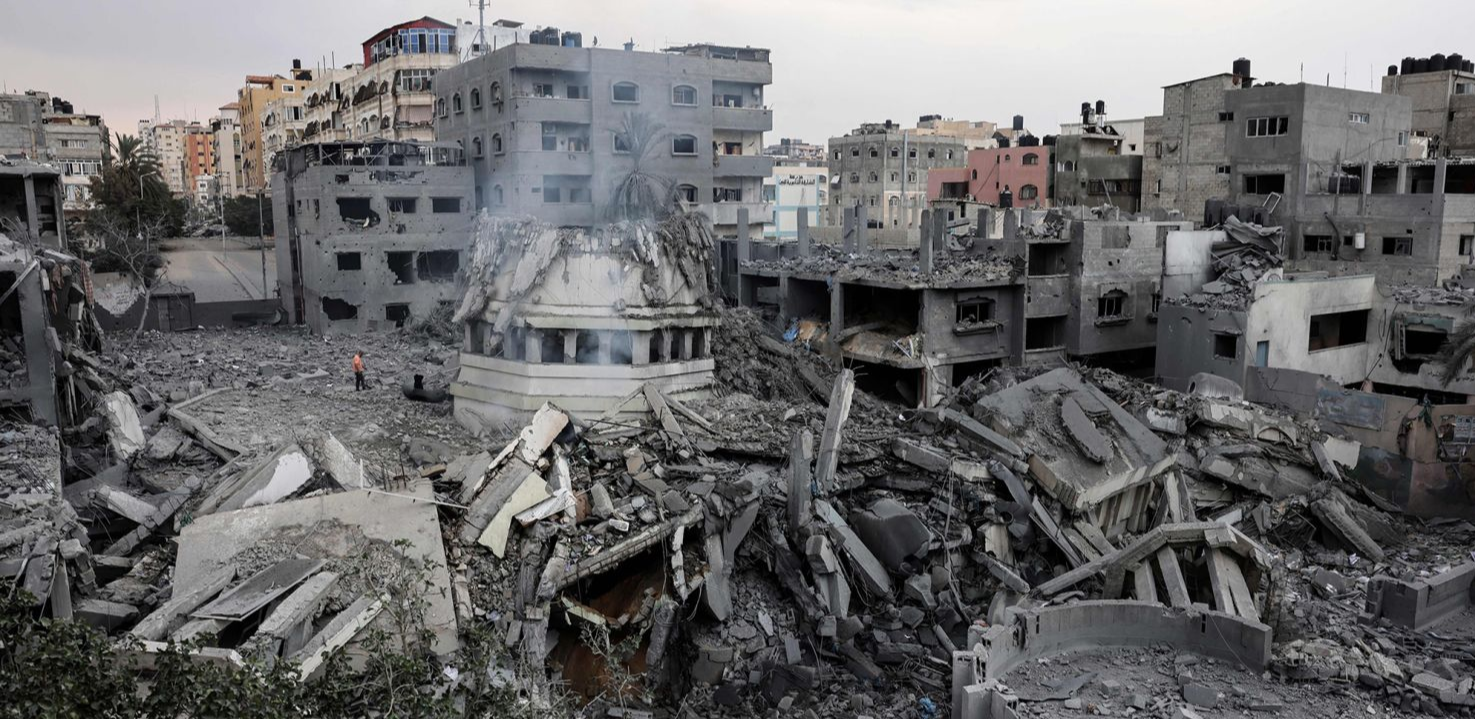
London, April 17 (RHC)-- A newly-released report says Israeli warplanes have rained down explosives on the Gaza Strip equivalent to nearly six times the power of the Hiroshima nuclear bomb.
According to a report published by Scientists for Global Security, about “70,000 tonnes of explosives” have been dropped on Gaza — one of the most densely populated territories in the world— by Israel since October 7, 2023.
Citing a report by Scientists for Global Security, Emeritus Professor of Peace Studies at Bradford University Paul Rogers, told British journalist Owen Jones that destruction in Gaza was “unparalleled in the post-WWII era.”
He said Israel has dropped about “70,000 tonnes of explosives” on the Gaza Strip. “Back in the Cold War days, we used to say a kilotonne is equivalent to a thousand tonnes of TNT. We are now using explosives that are much more powerful than TNT.”
Rogers said this figure equated to nearly six times the explosive power of the bomb dropped on Hiroshima by the US in 1945. “Very few people realize just how intense this has been, and how continual.”
“We’ve not seen much of it on TV here, compared to channels in the Middle East, which means right across the Arab world, the degree of anger – and, I have to say, hatred – of what is happening, is palpable,” he added.
On November 2, 2023, 26 days into Israel’s genocidal war on Gaza, the Euro-Med Human Rights Monitor (EHRM) estimated that the regime’s military had dropped 25,000 tonnes of bombs on 12,000 targets across the territory.
Scientists for Global Security wrote in a report back then that the estimate for the tonnage of bombs would mean an average of more than 2 tonnes of bombs per target. It said at the time that “by this date Gaza had been bombarded with the equivalent of two nuclear weapons over an area of 360 square km - far smaller than that of Hiroshima at 900 square km in 1945.”
Israel’s 17-month campaign of military campaign has devastated vast areas of the Palestinian territory, reducing entire enclave to rubble and crippling essential infrastructure. Residential buildings, schools, hospitals, and even refugee camps have been repeatedly targeted.
The regime’s relentless bombardment has not only claimed the lives of more than 51,000 people, also pushed the narrow strip to the brink of total collapse; creating what humanitarian groups describe as a “catastrophic and unsustainable” situation.
[ SOURCE: AFP and NEWS AGENCIES ]

